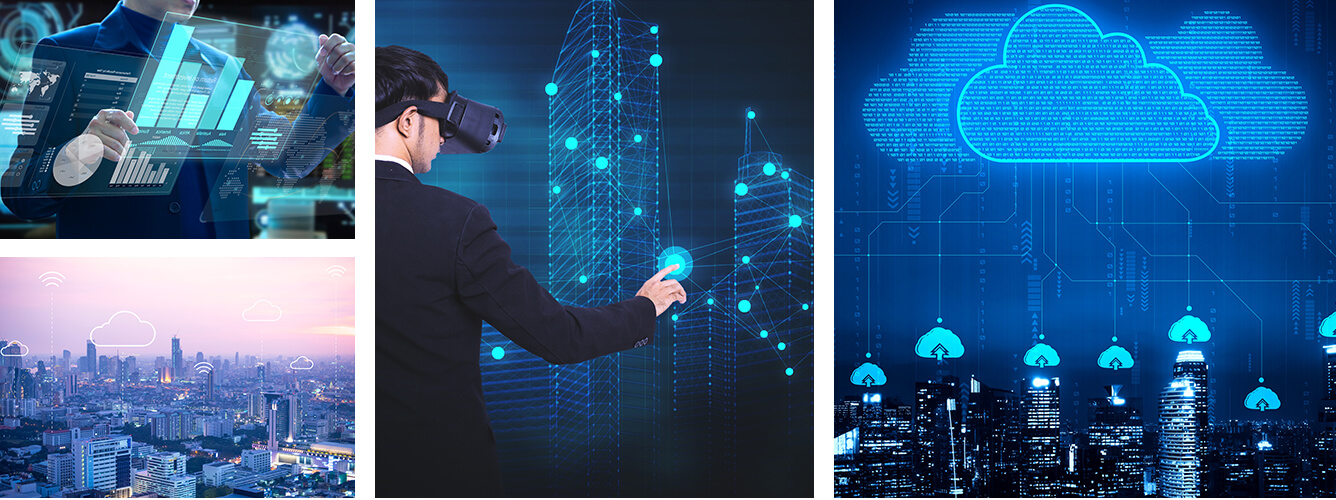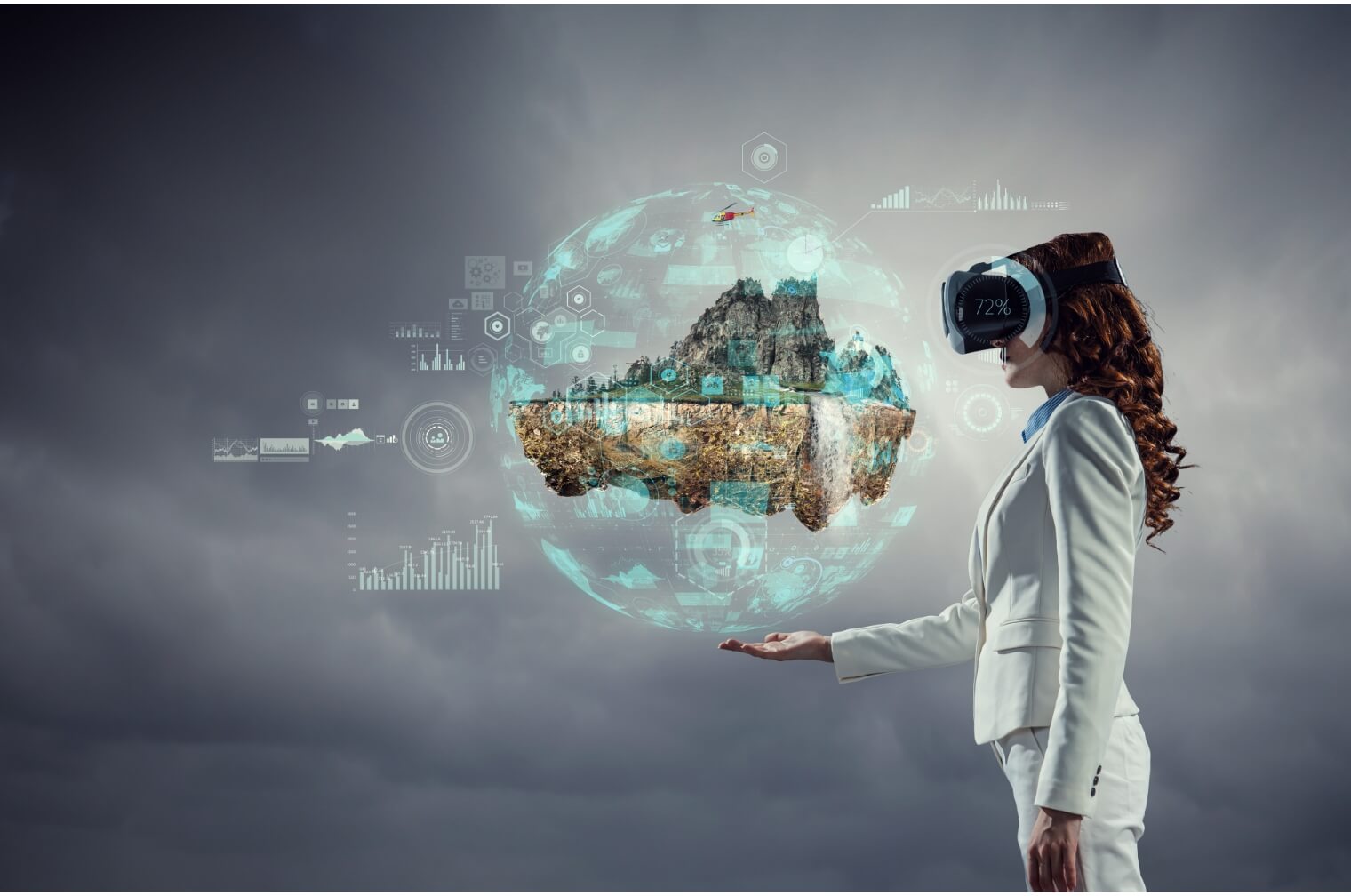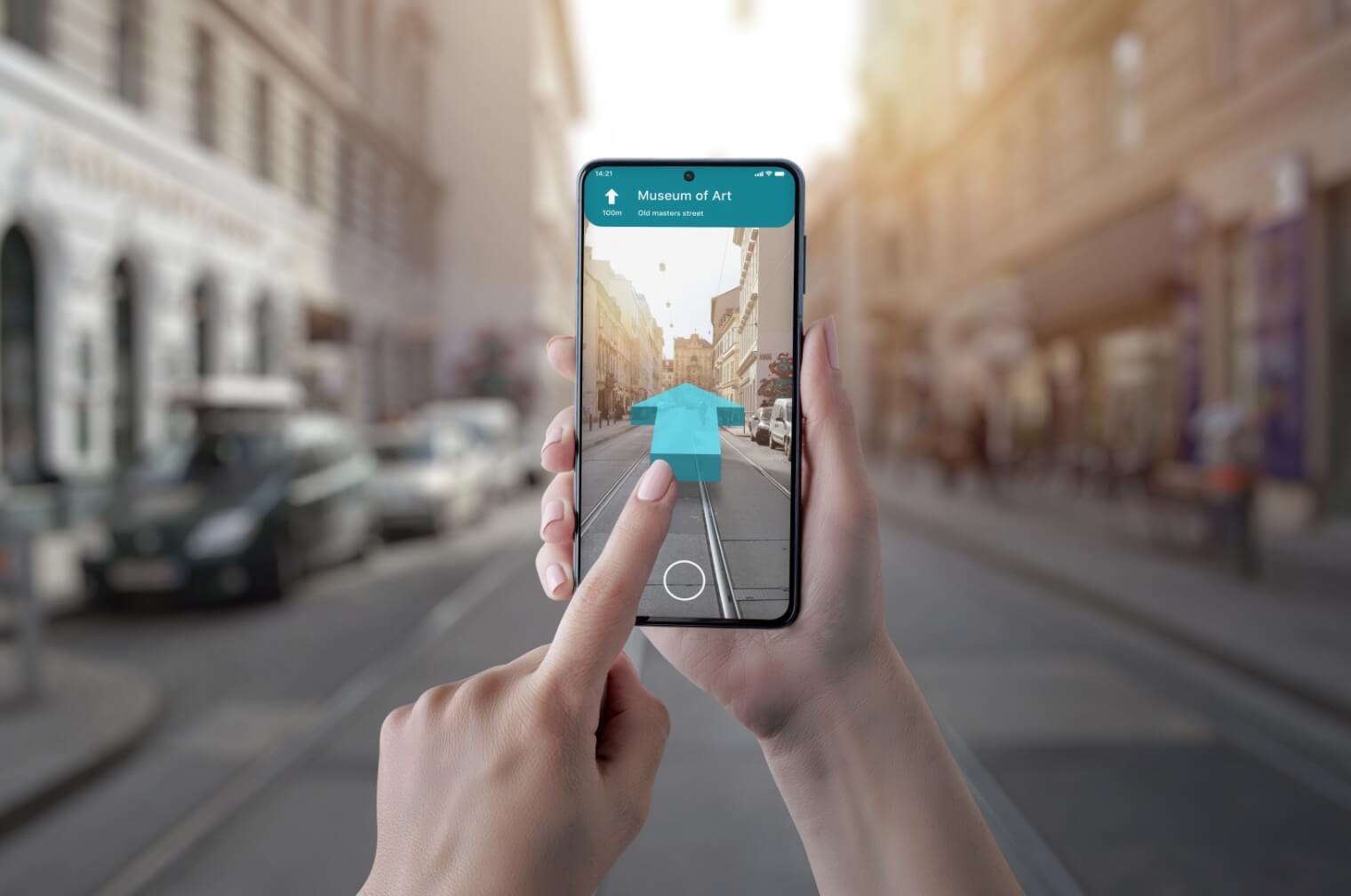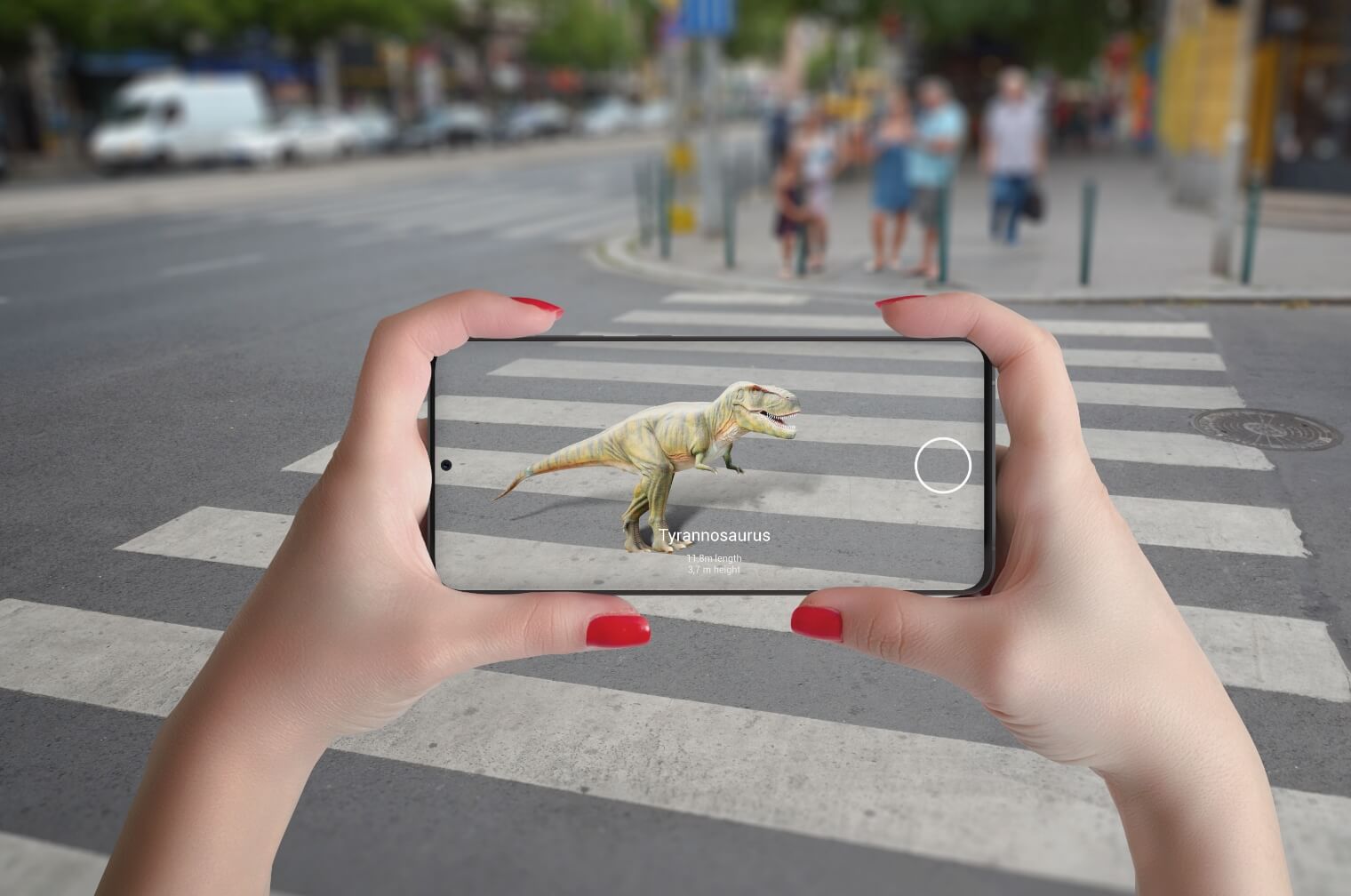Machine Learning and AI for revolution of Tech Companies are changing and streamlining businesses.
An Augmented Reality (AR) cloud is a technology that tends to build immersive and highly intuitive experiences by unifying digital and physical worlds. Moreover, it can also be termed a spatial or real-time 3D map paved onto the real world.
AR Cloud allows experiences and information to be shared, tied or augmented to specific physical locations to persist and occur across devices and apps. In the near future, companies will develop custom versions that will enable them to advertise their unmatched approaches and features effortlessly.
In Reality, they will do the same things: upload and connect data in the cloud to intelligent and handheld devices that will enable AR devices to become an easy gateway for new avatars in this domain of Reality overlaid with interactive virtual information.
According to Statista, “The majority of users (about 43%) will come from gaming and entertainment domain; however, significant services including engineering 14% and healthcare, i.e., 15% are striking AR market fast.
Ar cloud has emerged as one of the widely used amalgamations of existing processes and technologies, including:
- Edge Computing, & 5G Connectivity, IoT Expectations of people for internet speed have increased with the intervention of 5G technology. Gigabit connectivity is not easy to offer data nearly to the intelligent edge of the existing network where several data processing and computation must occur.
- Industrial Manufacturing Augmented Reality has several use cases for manufacturing industries. AR wearable assists technicians to measure changes, identify unsafe conditions, review information related to industrial functions in real-time. Google Glass Enterprise Edition provides AR-enabled solutions in healthcare, manufacturing, logistics and more industries.
- Digital-first Business Models Many retail organizations will need to include augmented Reality and adapt the business model’s capabilities to their offered services. A seamless and intuitive digital experience journey to a customer will be the base to provide a universal and real-time experience in the physical and digital world.
- Packaged Business Capabilities (PBC) PBC incorporates APIs, services, event channels, and data schema to provide intuitive and immersive business functionality without any external dependency. In addition, well-defined and structured capabilities are offered via technology to identify a particular business function.
- AR in Computer Vision Delivery of AR and data-intensive computation overlays will need more efficient and intelligent models, paving the clear path for the methods of Digital Twins and Advanced Computer Vision (two of the highly efficient and emerging technology trends as per Gartner reports).
- Healthcare AR will also impact the healthcare industry in conducting different medical processes in a precise manner. With the AR cloud, doctors and medical practitioners can also make models for several diseases like tumours, cancer and then make better decisions to treat or remove them. The handheld devices will work more efficiently and provide better results to reduce the risks.
- In-Store Marketing Supermarkets are growing at rocket speed and using AR for advertising. AR versions of celebrities and brand ambassadors could be approaching products at supermarkets in the future. AR technology assists in making marketing more efficient, cost-effective and profitable. These instances show the potential for AR cloud, yet they are still moderately separated experiences. All in all, even though they are collaborative, they exist autonomously with one another and are not a component of a comprehensive experience. Indeed AR cloud solutions offered by professional augmented reality development company will require an ecosystem system to convey scalable, persistent and collaborative experiences.

The future of AR cloud applications
One of the significant issues in AR adaption is the lack of off-the-shelf and scalable solutions – despite all such solutions being built purposefully to solve a set of specific problems. AR cloud experiences will intensify all such hindrances in different manners by requiring scalability while being ubiquitous, collaborative, and persistent.
By 2021, Gartner assumes AR cloud will be among the top four most useful immersive technologies.
While AR cloud still needs time to reach the mainstream, tech professionals implement this in their business processes. For example, App Clips by Apple can be utilized as anchors for an AR cloud system. It is activated by pointing your phone’s camera at App Clip codes, NFC tags, or QR codes.
Final words
AR applications are intended towards getting tremendous growth in the future. Lots of other augmented reality applications will add more functionalities and features to improve their user experience.
AR cloud technology will power up more businesses and assists them in creating next-generation applications. The AR cloud will allow users to access and interact easily with distinctive components of the Metaverse too.
An Augmented Reality (AR) cloud is a technology that tends to build immersive and highly intuitive experiences by unifying digital and physical worlds. Moreover, it can also be termed a spatial or real-time 3D map paved onto the real world.
AR Cloud allows experiences and information to be shared, tied or augmented to specific physical locations to persist and occur across devices and apps. Shortly, companies will develop custom versions that will enable them to advertise their unmatched approaches and features effortlessly.
In Reality, they will do the same things: upload and connect data in the cloud to intelligent and handheld devices that will enable AR devices to become an easy gateway for new avatars in this domain of Reality overlaid with interactive virtual information.
According to Statista, “The majority of users (about 43%) will come from gaming and entertainment domain; however, significant services including engineering 14% and healthcare, i.e., 15% are striking AR market fast.
AR cloud has emerged as one of the widely used amalgamations of existing processes and technologies, including:
- Edge Computing, & 5G Connectivity, IoT Expectations of people for internet speed have increased with the intervention of 5G technology. Gigabit connectivity is not easy to offer data nearly to the intelligent edge of the existing network where several data processing and computation must occur.
- Industrial Manufacturing Augmented Reality has several use cases for manufacturing industries. AR wearable assists technicians to measure changes, identify unsafe conditions, review information related to industrial functions in real-time. Google Glass Enterprise Edition provides AR-enabled solutions in healthcare, manufacturing, logistics and more industries.
- Digital-first Business Models Many retail organizations will need to include augmented Reality and adapt the business model’s capabilities to their offered services. A seamless and intuitive digital experience journey to a customer will be the base to provide a universal and real-time experience in the physical and digital world.
- Packaged Business Capabilities (PBC) PBC incorporates APIs, services, event channels, and data schema to provide intuitive and immersive business functionality without any external dependency. In addition, well-defined and structured capabilities are offered via technology to identify a particular business function.

- AR in Computer Vision Delivery of AR and data-intensive computation overlays will need more efficient and intelligent models, paving the clear path for the methods of Digital Twins and Advanced Computer Vision (two of the highly efficient and emerging technology trends as per Gartner reports).
- Healthcare AR will also impact the healthcare industry in conducting different medical processes in a precise manner. With the AR cloud, doctors and medical practitioners can also make models for several diseases like tumours, cancer and then make better decisions to treat or remove them. The handheld devices will work more efficiently and provide better results to reduce the risks.
- In-Store Marketing Supermarkets are growing at rocket speed and using AR for advertising. AR versions of celebrities and brand ambassadors could be approaching products at supermarkets in the future. AR technology assists in making marketing more efficient, cost-effective and profitable. These instances show the potential for AR cloud, yet they are still moderately separated experiences. All in all, even though they are collaborative, they exist autonomously with one another and are not a component of a comprehensive experience. Indeed AR cloud solutions offered by professional augmented reality development company will require an ecosystem system to convey scalable, persistent and collaborative experiences.
The future of AR cloud applications
One of the significant issues in AR adaption is the lack of off-the-shelf and scalable solutions – despite all such solutions being built purposefully to solve a set of specific problems. AR cloud experiences will intensify all such hindrances in different manners by requiring scalability while being ubiquitous, collaborative, and persistent.
By 2021, Gartner assumes AR cloud will be among the top four most useful immersive technologies.
While AR cloud still needs time to reach the mainstream, tech professionals implement this in their business processes. For example, App Clips by Apple can be utilized as anchors for an AR cloud system. It is activated by pointing your phone’s camera at App Clip codes, NFC tags, or QR codes.
Final words
AR applications are intended towards getting tremendous growth in the future. Lots of other augmented reality applications will add more functionalities and features to improve their user experience.
AR cloud technology will power up more businesses and assists them in creating next-generation applications. The AR cloud will allow users to access and interact easily with distinctive components of the Metaverse too.










